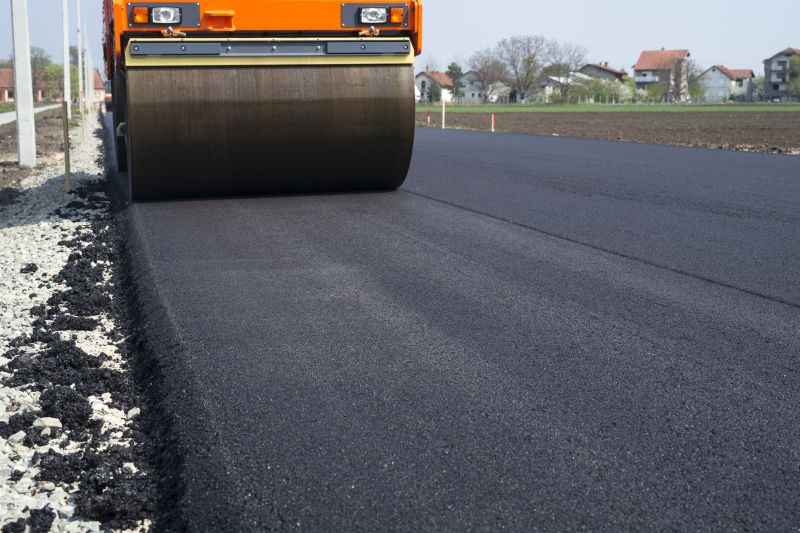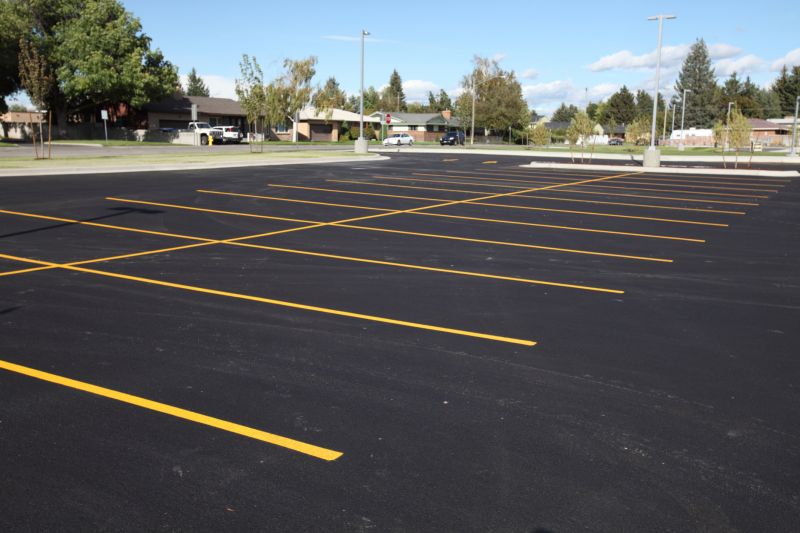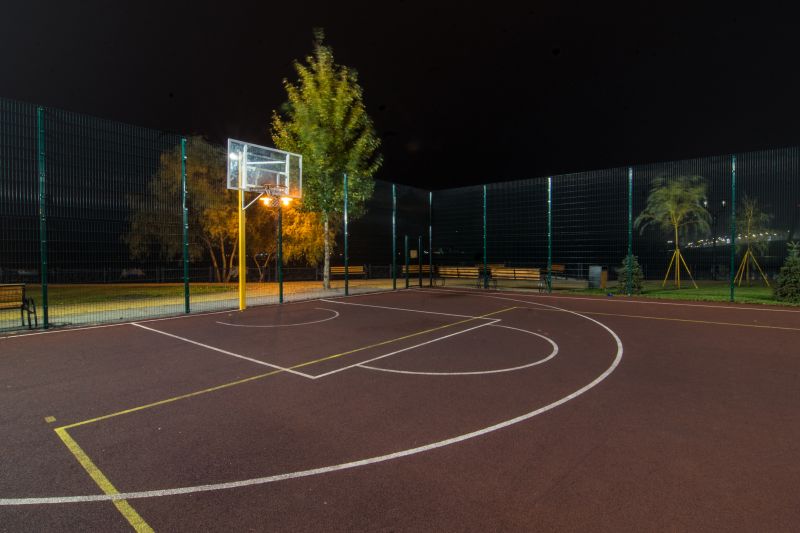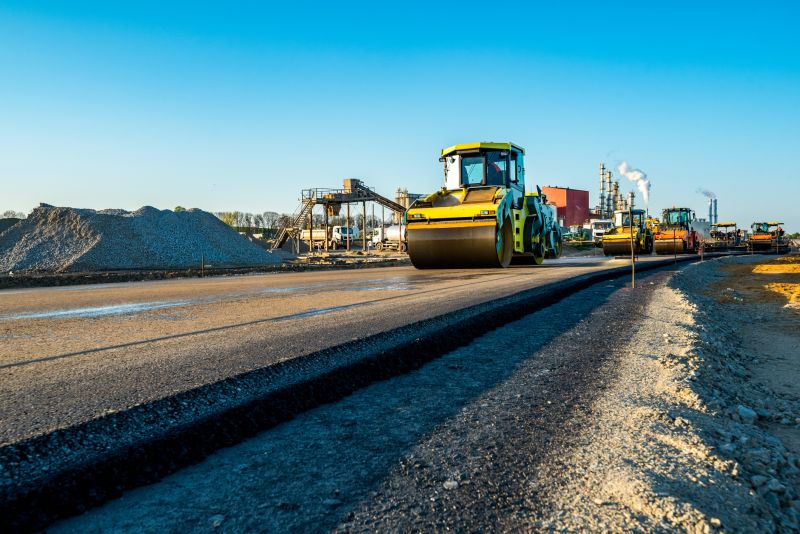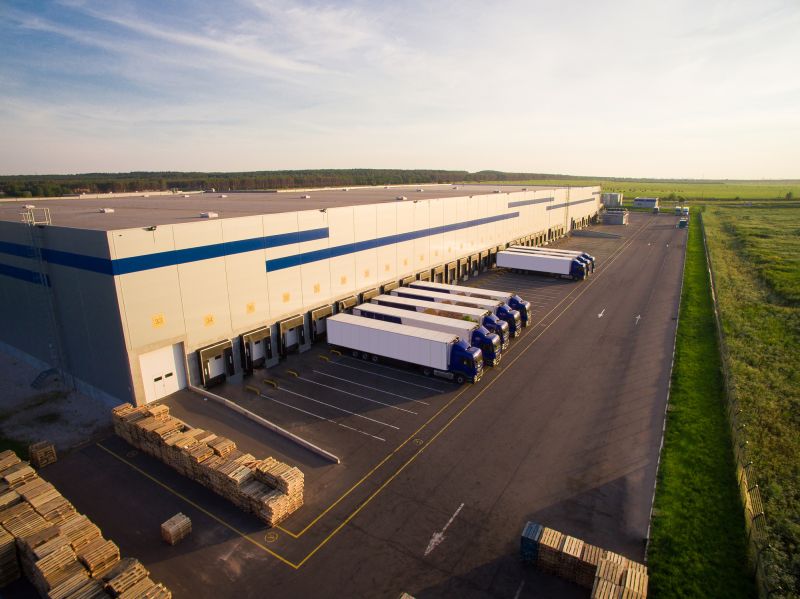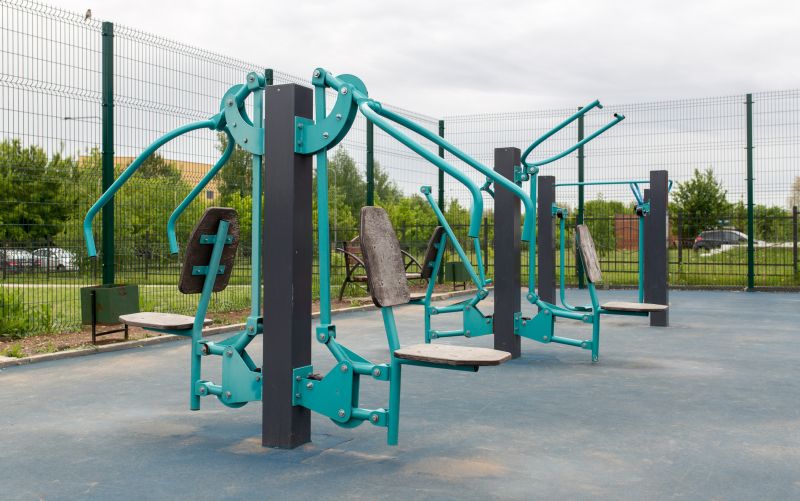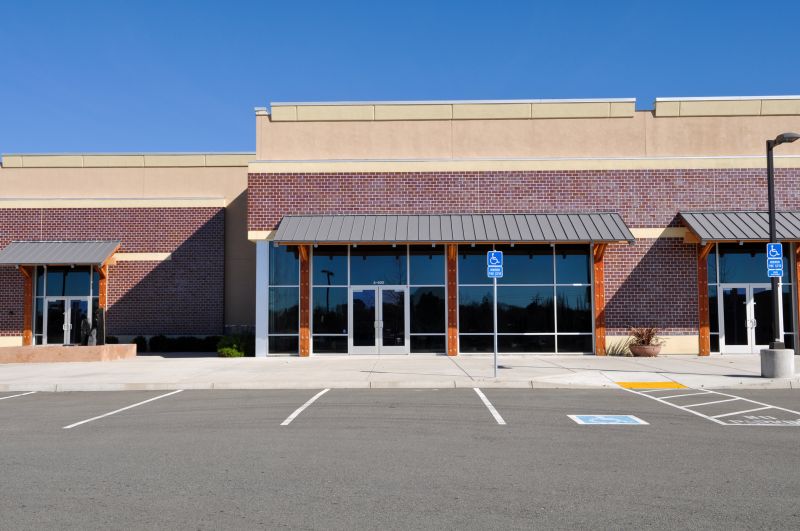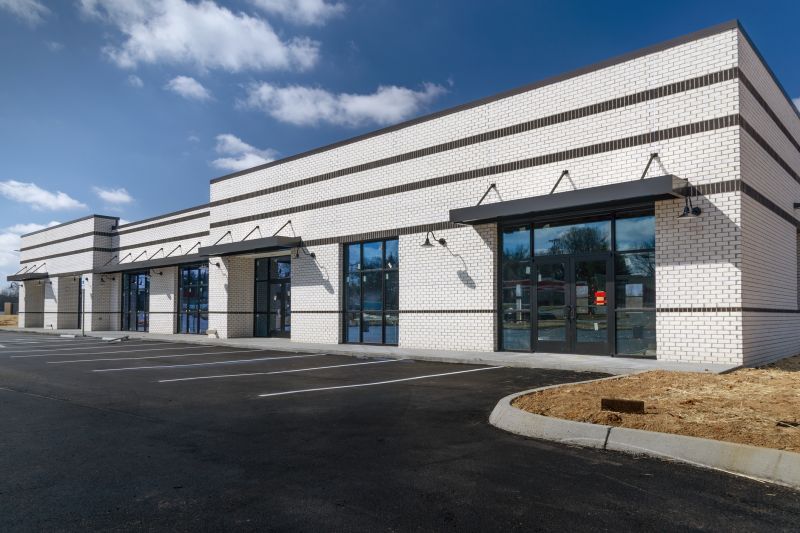Bridge Paving Project Supplies and Materials
Get help with your bridge paving needs. Fill out the form above and we will connect you with local pros in your area. Bridge paving requires a variety of tools and materials to ensure a smooth and durable surface. One of the essential tools is a concrete mixer, which is used to mix the concrete that will be poured onto the bridge. Additionally, rebar cutters and rebar benders are necessary for cutting and shaping the reinforcement bars that provide added strength to the bridge structure. Another crucial tool is a paver machine, which is used to lay the asphalt or concrete mixture evenly across the bridge surface. Compactors are then used to compact the material, ensuring proper adhesion and stability. Trowels and floats are used for finishing touches, smoothing and leveling the surface. In terms of materials, aggregate such as gravel and sand are used as a base for the bridge pavement. Asphalt or concrete mixtures, which consist of cement, water, and aggregates, are the primary materials used for paving the bridge. Expansion joints and sealants are also utilized to allow for the bridge's natural movement and prevent water damage. Finally, traffic cones, signage, and safety vests are essential for maintaining a safe work environment during bridge paving projects.
A concrete mixer is an essential tool for bridge paving projects. It is used to efficiently mix and blend the necessary ingredients, such as cement, aggregates, water, and additives, to create high-quality concrete. The mixer's rotating drum ensures thorough and consistent mixing, resulting in a uniform concrete mixture that is ideal for bridge paving applications. With its ability to handle large volumes of concrete, a concrete mixer enables construction crews to continuously supply the required concrete to bridge construction sites. This ensures a smooth and uninterrupted workflow, leading to efficient and timely completion of bridge paving projects.
Concrete is an ideal material for bridge paving due to its exceptional durability, strength, and versatility. It provides a sturdy and long-lasting surface that can withstand heavy traffic loads, extreme weather conditions, and constant exposure to water and chemicals. The use of concrete for bridge paving ensures a smooth and even road surface, enhancing safety for motorists and minimizing maintenance requirements. Additionally, concrete's ability to be molded into various shapes allows for the construction of intricate bridge designs, accommodating different architectural and engineering requirements. With its excellent load-bearing capacity and resistance to wear and tear, concrete is the preferred choice for bridge paving, offering reliability and longevity for transportation infrastructure.
Rebar cutters are essential tools used in bridge paving projects to efficiently and accurately cut reinforcing steel bars (rebar). These cutters are designed to handle the heavy-duty nature of bridge construction, enabling workers to quickly and precisely cut rebar to the required lengths. During bridge paving, rebar is used to reinforce the concrete structure, providing added strength and durability. Rebar cutters play a crucial role in the construction process by ensuring that the rebar is cut to the correct size and shape, allowing it to fit seamlessly into the bridge's framework. Using rebar cutters for bridge paving offers several benefits. Firstly, it saves time and effort by eliminating the need for manual cutting methods, such as using hacksaws or oxy-acetylene torches. Rebar cutters are power tools that can swiftly cut through the toughest steel bars, reducing labor-intensive processes and increasing overall productivity. Additionally, rebar cutters provide precise and clean cuts, ensuring the accuracy and quality of the bridge construction. This is crucial for maintaining the structural integrity of the bridge and ensuring its long-term stability. Overall, rebar cutters are indispensable tools in bridge paving projects, as they streamline the cutting process, improve efficiency, and contribute to the overall success and quality of the construction.
Rebar benders are essential tools used in bridge paving projects to shape and bend reinforcement bars, also known as rebar, to the required specifications. These machines are designed to efficiently and accurately bend the rebar, ensuring it fits perfectly into the bridge's concrete structure. By using rebar benders, bridge paving teams can easily shape the reinforcement bars into various configurations, such as angles, curves, and stirrups, to reinforce the concrete and enhance the structural integrity of the bridge. This process helps to distribute the load evenly and prevent cracking or collapsing under heavy traffic or environmental stress. Rebar benders are versatile and can handle different sizes and types of rebar, making them suitable for various bridge paving projects. They save time and labor by automating the bending process, allowing construction crews to work more efficiently and complete projects within deadlines. In summary, rebar benders are indispensable tools in bridge paving as they enable precise bending of reinforcement bars, ultimately contributing to the durability and strength of the bridge structure.
Reinforcement bars, commonly known as rebar, play a crucial role in bridge paving projects. These steel bars are strategically placed within the concrete structure to enhance its strength and durability. In bridge paving, rebar is used to reinforce the concrete deck, beams, and other structural components, ensuring they can withstand heavy loads, vibrations, and environmental factors. By adding rebar to the bridge pavement, it helps distribute the load more evenly, reducing the risk of cracks, fractures, and structural failures. The reinforcement bars also improve the overall stability and resistance to bending and shearing forces, making the bridge more reliable and long-lasting. Moreover, rebar can be designed and installed in various configurations, such as a grid pattern or as individual bars, depending on the specific requirements of the bridge design. This flexibility allows engineers to adapt the reinforcement to the anticipated stresses and load conditions, ensuring optimal performance and safety. In summary, the use of reinforcement bars in bridge paving provides the necessary strength, stability, and resilience to withstand the demands of heavy traffic, harsh weather conditions, and the test of time. It is an essential component in constructing durable and reliable bridges that can safely carry vehicles and pedestrians for years to come.
A Paver Machine is a versatile and efficient piece of equipment that can be used for bridge paving projects. With its advanced technology and precision controls, the Paver Machine ensures smooth and consistent placement of concrete or asphalt on bridge surfaces. It is designed to handle the unique challenges of bridge paving, such as narrow spaces, uneven terrain, and tight curves. The Paver Machine's adjustable screed allows for precise thickness and width control, ensuring that the bridge deck is accurately paved according to specifications. Its high productivity and speed make it an ideal choice for completing bridge paving projects in a timely manner, while maintaining the highest quality standards.
Asphalt, a versatile and durable material, is commonly used for bridge paving due to its exceptional properties. With its excellent load-bearing capacity and resistance to heavy traffic, asphalt provides a smooth and safe surface for vehicles to traverse on bridges. Its flexibility allows it to withstand the dynamic forces and temperature fluctuations experienced by bridges, ensuring long-lasting performance. Additionally, asphalt's quick installation and maintenance make it a cost-effective choice for bridge paving projects. Whether it's a small pedestrian bridge or a large highway overpass, asphalt offers a reliable and efficient solution for constructing and maintaining bridges.
Concrete is a versatile and durable material that is commonly used for bridge paving. Its exceptional strength and resistance to heavy loads make it ideal for supporting vehicular traffic. Concrete bridge paving offers several advantages, including long-lasting performance, low maintenance requirements, and resistance to weathering and corrosion. It provides a smooth and even surface that enhances driving comfort and safety. Additionally, concrete can be customized to meet specific design requirements, allowing for the construction of aesthetically pleasing and structurally sound bridges. Whether it's a small pedestrian bridge or a large highway overpass, concrete is a reliable choice for bridge paving, ensuring the longevity and reliability of these crucial transportation structures.
Compactors play a crucial role in bridge paving projects by ensuring a solid and durable foundation for the bridge deck. These heavy-duty machines are used to compact and consolidate the soil, aggregate, or asphalt layers, creating a stable base for the bridge structure. Compactors use their weight and vibration technology to reduce air voids, increase density, and improve the overall strength and stability of the pavement layers. By achieving proper compaction, compactors help prevent settlement, cracking, and other potential issues that could compromise the integrity of the bridge. With their versatility and efficiency, compactors are essential equipment in bridge construction, ensuring safe and long-lasting bridges for transportation infrastructure.
Trowels, commonly used in masonry work, can play a vital role in bridge paving projects. These versatile hand tools are designed to spread, shape, and smooth concrete or asphalt surfaces, making them ideal for achieving a flawless finish on bridge decks. Trowels are used to apply a thin layer of concrete or asphalt mix, ensuring proper adhesion and eliminating air pockets or voids. With their flat, rectangular blades and ergonomic handles, trowels allow workers to maneuver easily in tight spaces and corners, ensuring even coverage and a level surface. Whether it's repairing cracks, filling joints, or applying a protective coating, trowels are indispensable for bridge paving, providing precision and efficiency to enhance the durability and functionality of these crucial transportation structures.
Floats are essential tools in bridge paving, offering precise and efficient results. These specialized devices are designed to create a smooth and level surface on freshly poured concrete, ensuring the bridge deck is structurally sound and aesthetically pleasing. Floats, typically made of aluminum or magnesium, are equipped with adjustable handles and blades that can be adjusted to the desired angle, allowing workers to manipulate and shape the concrete to the desired specifications. By using floats, construction crews can eliminate imperfections, fill voids, and create a uniform finish on the bridge deck, resulting in a durable and visually appealing final product.
Aggregate is a crucial component in bridge paving projects, serving as the foundation for the smooth and durable surface of the bridge. It is used to create a strong base layer, providing stability and support to the bridge structure. The aggregate material, which typically consists of crushed stone, gravel, or sand, is carefully selected for its specific size and quality to ensure optimal performance. It is then compacted and leveled to create a solid and even surface, capable of withstanding heavy traffic loads and environmental factors. The use of aggregate in bridge paving not only enhances the structural integrity of the bridge but also contributes to its longevity and overall safety.
Gravel is a versatile material that can be effectively used for bridge paving. Its unique characteristics make it an ideal choice for this application. Gravel provides excellent drainage capabilities, ensuring that water does not accumulate on the bridge surface and cause damage. Its rough texture also enhances traction, making it safer for vehicles to traverse the bridge, especially during wet or icy conditions. Additionally, gravel is cost-effective and easy to install, making it a practical choice for bridge paving projects. Whether used as a base layer or as a top surface, gravel offers durability, stability, and longevity, making it an excellent option for bridge paving.
Sand is an essential component in bridge paving projects, serving multiple purposes that contribute to the durability and functionality of the structure. As a key ingredient in the concrete mixture, sand acts as a filler, providing strength and stability to the bridge surface. It helps to bind the other materials together, creating a solid foundation and preventing cracks or erosion over time. Additionally, sand is used in the construction of bridge embankments and approaches, where it is compacted and layered to ensure proper drainage and stability. Its granular nature allows for effective water flow, reducing the risk of flooding and potential damage to the bridge. Overall, sand plays a crucial role in bridge paving, enabling the creation of safe and long-lasting transportation infrastructure.
Asphalt, a versatile and durable material, is commonly used for bridge paving due to its excellent load-bearing capacity and resistance to heavy traffic. Its smooth surface provides superior traction and reduces the risk of skidding, ensuring safe passage for vehicles. Asphalt's flexibility allows it to withstand the constant movement and expansion/contraction of the bridge structure, making it an ideal choice for long-lasting and low-maintenance bridge surfaces. Additionally, asphalt's quick installation and repair process minimize disruptions to traffic flow, making it a practical solution for bridge paving projects.
Concrete is an ideal material for bridge paving due to its exceptional durability, strength, and longevity. It offers a solid foundation that can withstand heavy traffic loads, extreme weather conditions, and constant exposure to moisture and chemicals. Concrete's rigid nature ensures minimal deformation and settlement, providing a stable and smooth surface for vehicles to traverse. Additionally, concrete can be customized to meet specific design requirements, enabling the construction of bridges with various shapes, sizes, and architectural aesthetics. Its low maintenance needs and resistance to wear and tear make concrete an excellent choice for bridge paving, ensuring safe and reliable transportation for years to come.
Cement is a versatile material that plays a crucial role in bridge paving. With its exceptional strength and durability, cement is used to create a solid foundation for bridge structures. It is commonly employed in the construction of bridge abutments, piers, and decks, providing a stable and long-lasting surface for vehicles and pedestrians. When used in bridge paving, cement is typically mixed with aggregates, such as sand and gravel, and water to form concrete. This concrete mixture is then poured or applied onto the bridge surface, allowing it to harden and create a robust pavement. Cement-based bridge paving offers numerous benefits, including excellent load-bearing capacity, resistance to heavy traffic, and resistance to environmental factors like freeze-thaw cycles and chemical exposure. Furthermore, cement-based bridge paving can be customized to meet specific design requirements, allowing for various finishes, textures, and colors. This versatility ensures that the bridge pavement not only serves its functional purpose but also enhances the overall aesthetics of the structure. In summary, cement is an essential component in bridge paving, providing strength, durability, and versatility. Its use in creating a solid foundation and robust pavement ensures the safe and efficient passage of vehicles and pedestrians on bridges, while also contributing to the longevity and aesthetic appeal of these vital transportation structures.
Water can be used for bridge paving in various ways. Firstly, water is essential for mixing concrete or asphalt, the primary materials used for bridge paving. It helps in achieving the desired consistency and workability of the mixture, allowing for proper placement and compaction. Water is also used during the curing process of the bridge pavement. After the concrete or asphalt is laid, water is sprayed or applied to keep the surface moist. This prevents premature drying and shrinkage, ensuring the pavement sets and hardens properly, resulting in a durable and long-lasting bridge. Furthermore, water is crucial for cleaning and maintaining the bridge pavement. It is used for washing away dirt, debris, and pollutants, helping to maintain the integrity and appearance of the paved surface. Regular cleaning with water can also help prevent the buildup of harmful substances that could potentially damage the bridge. In summary, water plays a vital role in bridge paving, from the initial mixing of materials to the curing process and ongoing maintenance. Its use ensures the construction of sturdy, safe, and aesthetically pleasing bridges that can withstand the test of time.
Aggregates play a crucial role in bridge paving, serving as the main component of the concrete mixture used for constructing bridge decks and pavements. These granular materials, such as crushed stone, gravel, or sand, are carefully selected and graded to provide the desired strength, durability, and skid resistance for the bridge surface. Aggregates are mixed with cement and water to form concrete, which is then poured and cured to create a solid and sturdy bridge pavement. The size and shape of the aggregates are important factors in determining the concrete's workability and strength. Coarse aggregates provide stability and strength, while fine aggregates fill the gaps between larger particles, enhancing the overall cohesion of the mixture. In bridge paving, aggregates also contribute to the pavement's ability to withstand heavy loads, resist cracking, and endure harsh weather conditions. By incorporating aggregates with specific properties, such as angularity and hardness, engineers can design bridge pavements that are durable, skid-resistant, and long-lasting. Furthermore, aggregates can be used as a decorative element in bridge paving projects. Colored aggregates or exposed aggregates can be added to the concrete mix to create visually appealing and textured surfaces, enhancing the aesthetic appeal of the bridge. Overall, aggregates are essential components in bridge paving, providing the necessary strength, durability, and functionality required for safe and reliable transportation infrastructure.
Expansion joints are essential components in bridge paving that allow for the controlled movement and expansion of bridge structures. These joints are typically installed between bridge sections or segments to accommodate changes in temperature, load, and settling. By providing flexibility, expansion joints help to prevent the development of cracks and structural damage that can occur due to the expansion and contraction of bridge materials. They also help to distribute the load evenly across the bridge, ensuring its long-term stability and durability. Expansion joints are designed to absorb the movement and stress caused by thermal expansion and contraction, as well as the dynamic forces exerted by traffic and environmental factors. They can be made from various materials, such as rubber, steel, or elastomeric compounds, depending on the specific requirements of the bridge. Overall, the use of expansion joints in bridge paving is crucial for maintaining the integrity and functionality of the structure, prolonging its lifespan, and ensuring the safety of both the bridge and the vehicles that traverse it.
Sealants play a crucial role in bridge paving projects by providing a protective barrier against moisture, chemicals, and other elements that can cause damage to the bridge structure. These specialized materials are applied to the surface of the bridge deck, joints, and other vulnerable areas to prevent water infiltration and the subsequent deterioration of the underlying concrete or asphalt. Bridge paving sealants not only enhance the longevity of the structure but also contribute to the overall safety and smoothness of the road surface. By filling in cracks, gaps, and joints, sealants create a seamless and uniform surface, minimizing the risk of water seepage, freeze-thaw damage, and potential hazards for vehicles and pedestrians. Moreover, sealants for bridge paving can improve the structural integrity of the bridge by reducing the likelihood of spalling, corrosion, and erosion. They act as a protective shield, preventing the penetration of harmful substances such as deicing salts, oils, and chemicals, which can accelerate the deterioration process. In summary, sealants are essential in bridge paving projects as they provide a durable and protective layer that helps extend the lifespan of the bridge, enhance safety, and reduce maintenance costs.
Traffic cones are essential tools for ensuring safety and efficiency during bridge paving projects. These brightly colored cones are strategically placed to guide and redirect traffic, providing a clear and safe path for vehicles to navigate around the construction site. By effectively delineating work zones, traffic cones help prevent accidents and minimize disruptions to traffic flow. They also serve as a visual indicator for drivers, alerting them to potential hazards and ensuring that they maintain a safe distance from the construction area. Additionally, traffic cones can be used to mark temporary lane closures, detours, or any other changes in traffic patterns, allowing for smooth and organized traffic management. Overall, traffic cones play a crucial role in bridge paving projects by promoting safety, enhancing traffic control, and facilitating the seamless movement of vehicles.
Signage plays a crucial role in bridge paving projects, serving as an effective communication tool to ensure safety, efficiency, and clear direction. By strategically placing signage throughout the construction site, it helps guide motorists, pedestrians, and construction workers, minimizing confusion and potential hazards. Signage can provide essential information such as detour routes, speed limits, lane closures, and temporary traffic patterns. Additionally, it can communicate important warnings, such as construction zones, uneven surfaces, and restricted access areas. By utilizing signage effectively, bridge paving projects can enhance overall safety, facilitate smooth traffic flow, and ensure successful completion of the construction process.
Safety vests play a crucial role in ensuring the safety of workers during bridge paving projects. These high-visibility garments are worn by construction personnel to enhance their visibility, especially in low-light or high-traffic areas. Safety vests help to prevent accidents by making workers more easily seen by motorists, equipment operators, and other workers on site. By wearing safety vests, bridge paving workers can effectively communicate their presence and intentions, minimizing the risk of collisions and injuries. Whether it's directing traffic, operating machinery, or performing manual labor, safety vests are an essential safety measure that helps protect workers and maintain a secure work environment during bridge paving projects.
Concrete Mixer
Shop for Concrete MixerA concrete mixer is an essential tool for bridge paving projects. It is used to efficiently mix and blend the necessary ingredients, such as cement, aggregates, water, and additives, to create high-quality concrete. The mixer's rotating drum ensures thorough and consistent mixing, resulting in a uniform concrete mixture that is ideal for bridge paving applications. With its ability to handle large volumes of concrete, a concrete mixer enables construction crews to continuously supply the required concrete to bridge construction sites. This ensures a smooth and uninterrupted workflow, leading to efficient and timely completion of bridge paving projects.
Concrete
Shop for ConcreteConcrete is an ideal material for bridge paving due to its exceptional durability, strength, and versatility. It provides a sturdy and long-lasting surface that can withstand heavy traffic loads, extreme weather conditions, and constant exposure to water and chemicals. The use of concrete for bridge paving ensures a smooth and even road surface, enhancing safety for motorists and minimizing maintenance requirements. Additionally, concrete's ability to be molded into various shapes allows for the construction of intricate bridge designs, accommodating different architectural and engineering requirements. With its excellent load-bearing capacity and resistance to wear and tear, concrete is the preferred choice for bridge paving, offering reliability and longevity for transportation infrastructure.
Rebar Cutters
Shop for Rebar CuttersRebar cutters are essential tools used in bridge paving projects to efficiently and accurately cut reinforcing steel bars (rebar). These cutters are designed to handle the heavy-duty nature of bridge construction, enabling workers to quickly and precisely cut rebar to the required lengths. During bridge paving, rebar is used to reinforce the concrete structure, providing added strength and durability. Rebar cutters play a crucial role in the construction process by ensuring that the rebar is cut to the correct size and shape, allowing it to fit seamlessly into the bridge's framework. Using rebar cutters for bridge paving offers several benefits. Firstly, it saves time and effort by eliminating the need for manual cutting methods, such as using hacksaws or oxy-acetylene torches. Rebar cutters are power tools that can swiftly cut through the toughest steel bars, reducing labor-intensive processes and increasing overall productivity. Additionally, rebar cutters provide precise and clean cuts, ensuring the accuracy and quality of the bridge construction. This is crucial for maintaining the structural integrity of the bridge and ensuring its long-term stability. Overall, rebar cutters are indispensable tools in bridge paving projects, as they streamline the cutting process, improve efficiency, and contribute to the overall success and quality of the construction.
Rebar Benders
Shop for Rebar BendersRebar benders are essential tools used in bridge paving projects to shape and bend reinforcement bars, also known as rebar, to the required specifications. These machines are designed to efficiently and accurately bend the rebar, ensuring it fits perfectly into the bridge's concrete structure. By using rebar benders, bridge paving teams can easily shape the reinforcement bars into various configurations, such as angles, curves, and stirrups, to reinforce the concrete and enhance the structural integrity of the bridge. This process helps to distribute the load evenly and prevent cracking or collapsing under heavy traffic or environmental stress. Rebar benders are versatile and can handle different sizes and types of rebar, making them suitable for various bridge paving projects. They save time and labor by automating the bending process, allowing construction crews to work more efficiently and complete projects within deadlines. In summary, rebar benders are indispensable tools in bridge paving as they enable precise bending of reinforcement bars, ultimately contributing to the durability and strength of the bridge structure.
Reinforcement Bars
Shop for Reinforcement BarsReinforcement bars, commonly known as rebar, play a crucial role in bridge paving projects. These steel bars are strategically placed within the concrete structure to enhance its strength and durability. In bridge paving, rebar is used to reinforce the concrete deck, beams, and other structural components, ensuring they can withstand heavy loads, vibrations, and environmental factors. By adding rebar to the bridge pavement, it helps distribute the load more evenly, reducing the risk of cracks, fractures, and structural failures. The reinforcement bars also improve the overall stability and resistance to bending and shearing forces, making the bridge more reliable and long-lasting. Moreover, rebar can be designed and installed in various configurations, such as a grid pattern or as individual bars, depending on the specific requirements of the bridge design. This flexibility allows engineers to adapt the reinforcement to the anticipated stresses and load conditions, ensuring optimal performance and safety. In summary, the use of reinforcement bars in bridge paving provides the necessary strength, stability, and resilience to withstand the demands of heavy traffic, harsh weather conditions, and the test of time. It is an essential component in constructing durable and reliable bridges that can safely carry vehicles and pedestrians for years to come.
Paver Machine
Shop for Paver MachineA Paver Machine is a versatile and efficient piece of equipment that can be used for bridge paving projects. With its advanced technology and precision controls, the Paver Machine ensures smooth and consistent placement of concrete or asphalt on bridge surfaces. It is designed to handle the unique challenges of bridge paving, such as narrow spaces, uneven terrain, and tight curves. The Paver Machine's adjustable screed allows for precise thickness and width control, ensuring that the bridge deck is accurately paved according to specifications. Its high productivity and speed make it an ideal choice for completing bridge paving projects in a timely manner, while maintaining the highest quality standards.
Asphalt
Shop for AsphaltAsphalt, a versatile and durable material, is commonly used for bridge paving due to its exceptional properties. With its excellent load-bearing capacity and resistance to heavy traffic, asphalt provides a smooth and safe surface for vehicles to traverse on bridges. Its flexibility allows it to withstand the dynamic forces and temperature fluctuations experienced by bridges, ensuring long-lasting performance. Additionally, asphalt's quick installation and maintenance make it a cost-effective choice for bridge paving projects. Whether it's a small pedestrian bridge or a large highway overpass, asphalt offers a reliable and efficient solution for constructing and maintaining bridges.
Concrete
Shop for ConcreteConcrete is a versatile and durable material that is commonly used for bridge paving. Its exceptional strength and resistance to heavy loads make it ideal for supporting vehicular traffic. Concrete bridge paving offers several advantages, including long-lasting performance, low maintenance requirements, and resistance to weathering and corrosion. It provides a smooth and even surface that enhances driving comfort and safety. Additionally, concrete can be customized to meet specific design requirements, allowing for the construction of aesthetically pleasing and structurally sound bridges. Whether it's a small pedestrian bridge or a large highway overpass, concrete is a reliable choice for bridge paving, ensuring the longevity and reliability of these crucial transportation structures.
Compactors
Shop for CompactorsCompactors play a crucial role in bridge paving projects by ensuring a solid and durable foundation for the bridge deck. These heavy-duty machines are used to compact and consolidate the soil, aggregate, or asphalt layers, creating a stable base for the bridge structure. Compactors use their weight and vibration technology to reduce air voids, increase density, and improve the overall strength and stability of the pavement layers. By achieving proper compaction, compactors help prevent settlement, cracking, and other potential issues that could compromise the integrity of the bridge. With their versatility and efficiency, compactors are essential equipment in bridge construction, ensuring safe and long-lasting bridges for transportation infrastructure.
Trowels
Shop for TrowelsTrowels, commonly used in masonry work, can play a vital role in bridge paving projects. These versatile hand tools are designed to spread, shape, and smooth concrete or asphalt surfaces, making them ideal for achieving a flawless finish on bridge decks. Trowels are used to apply a thin layer of concrete or asphalt mix, ensuring proper adhesion and eliminating air pockets or voids. With their flat, rectangular blades and ergonomic handles, trowels allow workers to maneuver easily in tight spaces and corners, ensuring even coverage and a level surface. Whether it's repairing cracks, filling joints, or applying a protective coating, trowels are indispensable for bridge paving, providing precision and efficiency to enhance the durability and functionality of these crucial transportation structures.
Floats
Shop for FloatsFloats are essential tools in bridge paving, offering precise and efficient results. These specialized devices are designed to create a smooth and level surface on freshly poured concrete, ensuring the bridge deck is structurally sound and aesthetically pleasing. Floats, typically made of aluminum or magnesium, are equipped with adjustable handles and blades that can be adjusted to the desired angle, allowing workers to manipulate and shape the concrete to the desired specifications. By using floats, construction crews can eliminate imperfections, fill voids, and create a uniform finish on the bridge deck, resulting in a durable and visually appealing final product.
Aggregate
Shop for AggregateAggregate is a crucial component in bridge paving projects, serving as the foundation for the smooth and durable surface of the bridge. It is used to create a strong base layer, providing stability and support to the bridge structure. The aggregate material, which typically consists of crushed stone, gravel, or sand, is carefully selected for its specific size and quality to ensure optimal performance. It is then compacted and leveled to create a solid and even surface, capable of withstanding heavy traffic loads and environmental factors. The use of aggregate in bridge paving not only enhances the structural integrity of the bridge but also contributes to its longevity and overall safety.
Gravel
Shop for GravelGravel is a versatile material that can be effectively used for bridge paving. Its unique characteristics make it an ideal choice for this application. Gravel provides excellent drainage capabilities, ensuring that water does not accumulate on the bridge surface and cause damage. Its rough texture also enhances traction, making it safer for vehicles to traverse the bridge, especially during wet or icy conditions. Additionally, gravel is cost-effective and easy to install, making it a practical choice for bridge paving projects. Whether used as a base layer or as a top surface, gravel offers durability, stability, and longevity, making it an excellent option for bridge paving.
Sand
Shop for SandSand is an essential component in bridge paving projects, serving multiple purposes that contribute to the durability and functionality of the structure. As a key ingredient in the concrete mixture, sand acts as a filler, providing strength and stability to the bridge surface. It helps to bind the other materials together, creating a solid foundation and preventing cracks or erosion over time. Additionally, sand is used in the construction of bridge embankments and approaches, where it is compacted and layered to ensure proper drainage and stability. Its granular nature allows for effective water flow, reducing the risk of flooding and potential damage to the bridge. Overall, sand plays a crucial role in bridge paving, enabling the creation of safe and long-lasting transportation infrastructure.
Asphalt
Shop for AsphaltAsphalt, a versatile and durable material, is commonly used for bridge paving due to its excellent load-bearing capacity and resistance to heavy traffic. Its smooth surface provides superior traction and reduces the risk of skidding, ensuring safe passage for vehicles. Asphalt's flexibility allows it to withstand the constant movement and expansion/contraction of the bridge structure, making it an ideal choice for long-lasting and low-maintenance bridge surfaces. Additionally, asphalt's quick installation and repair process minimize disruptions to traffic flow, making it a practical solution for bridge paving projects.
Concrete
Shop for ConcreteConcrete is an ideal material for bridge paving due to its exceptional durability, strength, and longevity. It offers a solid foundation that can withstand heavy traffic loads, extreme weather conditions, and constant exposure to moisture and chemicals. Concrete's rigid nature ensures minimal deformation and settlement, providing a stable and smooth surface for vehicles to traverse. Additionally, concrete can be customized to meet specific design requirements, enabling the construction of bridges with various shapes, sizes, and architectural aesthetics. Its low maintenance needs and resistance to wear and tear make concrete an excellent choice for bridge paving, ensuring safe and reliable transportation for years to come.
Cement
Shop for CementCement is a versatile material that plays a crucial role in bridge paving. With its exceptional strength and durability, cement is used to create a solid foundation for bridge structures. It is commonly employed in the construction of bridge abutments, piers, and decks, providing a stable and long-lasting surface for vehicles and pedestrians. When used in bridge paving, cement is typically mixed with aggregates, such as sand and gravel, and water to form concrete. This concrete mixture is then poured or applied onto the bridge surface, allowing it to harden and create a robust pavement. Cement-based bridge paving offers numerous benefits, including excellent load-bearing capacity, resistance to heavy traffic, and resistance to environmental factors like freeze-thaw cycles and chemical exposure. Furthermore, cement-based bridge paving can be customized to meet specific design requirements, allowing for various finishes, textures, and colors. This versatility ensures that the bridge pavement not only serves its functional purpose but also enhances the overall aesthetics of the structure. In summary, cement is an essential component in bridge paving, providing strength, durability, and versatility. Its use in creating a solid foundation and robust pavement ensures the safe and efficient passage of vehicles and pedestrians on bridges, while also contributing to the longevity and aesthetic appeal of these vital transportation structures.
Water
Shop for WaterWater can be used for bridge paving in various ways. Firstly, water is essential for mixing concrete or asphalt, the primary materials used for bridge paving. It helps in achieving the desired consistency and workability of the mixture, allowing for proper placement and compaction. Water is also used during the curing process of the bridge pavement. After the concrete or asphalt is laid, water is sprayed or applied to keep the surface moist. This prevents premature drying and shrinkage, ensuring the pavement sets and hardens properly, resulting in a durable and long-lasting bridge. Furthermore, water is crucial for cleaning and maintaining the bridge pavement. It is used for washing away dirt, debris, and pollutants, helping to maintain the integrity and appearance of the paved surface. Regular cleaning with water can also help prevent the buildup of harmful substances that could potentially damage the bridge. In summary, water plays a vital role in bridge paving, from the initial mixing of materials to the curing process and ongoing maintenance. Its use ensures the construction of sturdy, safe, and aesthetically pleasing bridges that can withstand the test of time.
Aggregates
Shop for AggregatesAggregates play a crucial role in bridge paving, serving as the main component of the concrete mixture used for constructing bridge decks and pavements. These granular materials, such as crushed stone, gravel, or sand, are carefully selected and graded to provide the desired strength, durability, and skid resistance for the bridge surface. Aggregates are mixed with cement and water to form concrete, which is then poured and cured to create a solid and sturdy bridge pavement. The size and shape of the aggregates are important factors in determining the concrete's workability and strength. Coarse aggregates provide stability and strength, while fine aggregates fill the gaps between larger particles, enhancing the overall cohesion of the mixture. In bridge paving, aggregates also contribute to the pavement's ability to withstand heavy loads, resist cracking, and endure harsh weather conditions. By incorporating aggregates with specific properties, such as angularity and hardness, engineers can design bridge pavements that are durable, skid-resistant, and long-lasting. Furthermore, aggregates can be used as a decorative element in bridge paving projects. Colored aggregates or exposed aggregates can be added to the concrete mix to create visually appealing and textured surfaces, enhancing the aesthetic appeal of the bridge. Overall, aggregates are essential components in bridge paving, providing the necessary strength, durability, and functionality required for safe and reliable transportation infrastructure.
Expansion Joints
Shop for Expansion JointsExpansion joints are essential components in bridge paving that allow for the controlled movement and expansion of bridge structures. These joints are typically installed between bridge sections or segments to accommodate changes in temperature, load, and settling. By providing flexibility, expansion joints help to prevent the development of cracks and structural damage that can occur due to the expansion and contraction of bridge materials. They also help to distribute the load evenly across the bridge, ensuring its long-term stability and durability. Expansion joints are designed to absorb the movement and stress caused by thermal expansion and contraction, as well as the dynamic forces exerted by traffic and environmental factors. They can be made from various materials, such as rubber, steel, or elastomeric compounds, depending on the specific requirements of the bridge. Overall, the use of expansion joints in bridge paving is crucial for maintaining the integrity and functionality of the structure, prolonging its lifespan, and ensuring the safety of both the bridge and the vehicles that traverse it.
Sealants
Shop for SealantsSealants play a crucial role in bridge paving projects by providing a protective barrier against moisture, chemicals, and other elements that can cause damage to the bridge structure. These specialized materials are applied to the surface of the bridge deck, joints, and other vulnerable areas to prevent water infiltration and the subsequent deterioration of the underlying concrete or asphalt. Bridge paving sealants not only enhance the longevity of the structure but also contribute to the overall safety and smoothness of the road surface. By filling in cracks, gaps, and joints, sealants create a seamless and uniform surface, minimizing the risk of water seepage, freeze-thaw damage, and potential hazards for vehicles and pedestrians. Moreover, sealants for bridge paving can improve the structural integrity of the bridge by reducing the likelihood of spalling, corrosion, and erosion. They act as a protective shield, preventing the penetration of harmful substances such as deicing salts, oils, and chemicals, which can accelerate the deterioration process. In summary, sealants are essential in bridge paving projects as they provide a durable and protective layer that helps extend the lifespan of the bridge, enhance safety, and reduce maintenance costs.
Traffic Cones
Shop for Traffic ConesTraffic cones are essential tools for ensuring safety and efficiency during bridge paving projects. These brightly colored cones are strategically placed to guide and redirect traffic, providing a clear and safe path for vehicles to navigate around the construction site. By effectively delineating work zones, traffic cones help prevent accidents and minimize disruptions to traffic flow. They also serve as a visual indicator for drivers, alerting them to potential hazards and ensuring that they maintain a safe distance from the construction area. Additionally, traffic cones can be used to mark temporary lane closures, detours, or any other changes in traffic patterns, allowing for smooth and organized traffic management. Overall, traffic cones play a crucial role in bridge paving projects by promoting safety, enhancing traffic control, and facilitating the seamless movement of vehicles.
Signage
Shop for SignageSignage plays a crucial role in bridge paving projects, serving as an effective communication tool to ensure safety, efficiency, and clear direction. By strategically placing signage throughout the construction site, it helps guide motorists, pedestrians, and construction workers, minimizing confusion and potential hazards. Signage can provide essential information such as detour routes, speed limits, lane closures, and temporary traffic patterns. Additionally, it can communicate important warnings, such as construction zones, uneven surfaces, and restricted access areas. By utilizing signage effectively, bridge paving projects can enhance overall safety, facilitate smooth traffic flow, and ensure successful completion of the construction process.
Safety Vests
Shop for Safety VestsSafety vests play a crucial role in ensuring the safety of workers during bridge paving projects. These high-visibility garments are worn by construction personnel to enhance their visibility, especially in low-light or high-traffic areas. Safety vests help to prevent accidents by making workers more easily seen by motorists, equipment operators, and other workers on site. By wearing safety vests, bridge paving workers can effectively communicate their presence and intentions, minimizing the risk of collisions and injuries. Whether it's directing traffic, operating machinery, or performing manual labor, safety vests are an essential safety measure that helps protect workers and maintain a secure work environment during bridge paving projects.


